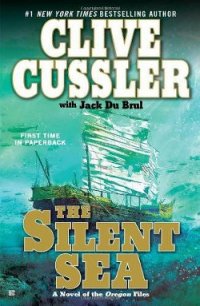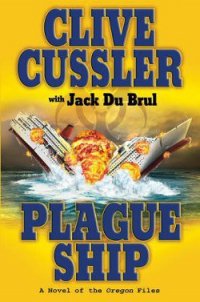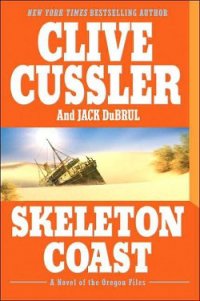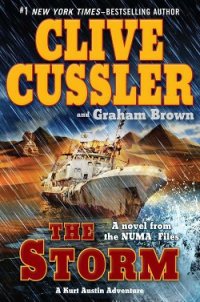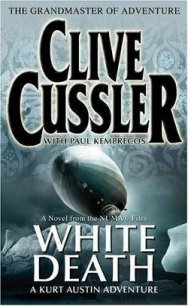Dark Watch - Cussler Clive (книга бесплатный формат .txt) 📗
This contract, like many the Corporation accepted, had come through back channels from the United States government. While the Corporation was a for-profit enterprise, the men and women who served on the Oregon were for the most part ex–U.S. military and tended to take jobs that benefited the United States and her allies, or at the very least, didn’t harm American interests.
With no end in sight on the war on terror, there was a never-ending string of contracts for a team like the one Cabrillo had assembled — black ops specialists without the constraint of the Geneva Convention or congressional oversight. That wasn’t to say the crew were a bunch of cutthroat pirates who took no prisoners. They were deeply conscientious about what they did but understood that the lines of conflict had blurred in the twenty-first century.
This mission was a perfect example.
North Korea had every right to sell ten single-stage tactical missiles to Syria, and the United States would have begrudgingly let the sale proceed. However, intelligence intercepts had determined the real Colonel Hazni Hourani planned on diverting the Asia Star so that two of the Nodongs and a pair of mobile launchers could be off-loaded in Somalia and given to Al-Qaeda, who would launch them hours later at targets in Saudi Arabia, notably the holy cities of Mecca and Medina, in a twisted plot to oust the Saudi royal family. It also appeared, but couldn’t be verified, that Hourani was acting with the tacit approval of the Syrian government.
The United States could send a warship to intercept the Asia Star in Somalia; however, the vessel’s captain would only have to claim that they were diverted for repairs, and the ten missiles would end up in Damascus. The better alternative was to sink the Star en route, but if the truth came out, there would be an international outcry and swift retaliation from terrorist cells controlled by Damascus. It was Langston Overholt IV, a high-ranking official in the CIA, who came up with the best alternative: using the Corporation.
Cabrillo had been given just four weeks to plan how to get rid of the problem as quietly and with as little exposure as possible. Cabrillo had intuitively known that the best way to prevent the missiles from reaching their customers, be they legitimate or otherwise, was to stop them from ever leaving North Korea.
Once the Oregon was in position off Yonghung-man Bay, Cabrillo, Hanley, and Hali Kasim headed to Bagram Airbase outside of Kabul, Afghanistan, in a Dassault Falcon identical to the one used by Colonel Hourani.
CIA assets on the ground in Damascus confirmed the flight time for Hourani’s trip to Pyongyang, and a dedicated AWACS had tracked the corporate jet as it flew halfway around the world. Once it entered Afghan airspace, an F-22 Raptor stealth fighter that had been flown expressly to the theater for the mission had taken off from Bagram. The Corporation’s own Falcon had left a moment later, heading south, away from the Syrians. While the U.S. controlled all of the radar facilities capable of monitoring what was about to happen, it was imperative that there be no evidence of the switch.
In one of the few zones where radar coverage was nonexistent, Tiny Gunderson, the Corporation’s chief pilot, began to turn back north. Only this time the Dassault Falcon wasn’t alone. She’d been joined by a B-2 stealth bomber from Whiteman Air Force Base in Missouri. Because the bomber was larger than the Falcon, yet undetectable by radar, Tiny kept his aircraft fifty feet above the flying wing. No ground-based radar on earth could track a B-2, and by shielding the Falcon, the Corporation’s jet remained hidden as they began to close on Hourani’s plane.
At forty thousand feet, the Syrian Falcon jet was at her maximum ceiling, while the Raptor fast approaching her could have made the intercept four miles farther into the sky. The timing was critical. When the B-2 was a mere half mile behind Hourani’s aircraft, the Raptor opened her weapons bay and unleashed a pair of AIM-120C AMRAAM missiles.
Had the Syrian jet carried threat radar, the missiles would have appeared out of nowhere. As it was, the older French-built aircraft didn’t have such a system, so the two missiles impacted the Garrett TFE-731 turbofans without the slightest warning. Even as the Dassault exploded in midair, the pilot of the B-2 dove away from Tiny Gunderson’s Falcon. At that altitude anyone on the ground who saw the brief fireball would have assumed it was a shooting star. And anyone watching a radar screen would have noticed the Syrian aircraft suddenly vanish for an instant, then reappear a half mile to the west before continuing on normally. They might have guessed their system had glitched, if they gave the incident any thought at all.
Now that Cabrillo, Hanley, and Kasim were safely aboard the Asia Star, all that remained was to plant the bomb, avoid detection getting off the ship, rendezvous with Eddie Seng in the minisub, slip out of the best-protected harbor in North Korea, and reach the Oregon before anyone realized the Star had been sabotaged.
Not a typical day for members of the Corporation. But not all that atypical, either.
2
A scream woke Victoria Ballinger. It also saved her life.
Tory was the only female aboard the Royal Geographic Society’s research ship Avalon, after her cabin mate was transported to a hospital in Japan for acute appendicitis a week ago. Having a cabin to herself also contributed to her salvation.
The ship had been at sea for a month, part of a coordinated international effort to fully map the currents of the Sea of Japan, an area little understood because Japan and Korea fiercely protected their fishing rights and felt any cooperation could jeopardize them.
Unlike her roommate, who’d brought suitcases loaded with clothes and personal items, Tory lived a spartan existence aboard ship. Other than her bedding and a week’s worth of jeans and rugby shirts, her cabin was empty.
The scream came from the passageway outside her door, a male cry of agony that snapped her awake. Even as her vision cleared of sleep, she heard muted gunfire. Her senses sharpened, and she heard more automatic weapons fire, more shouts, and more screams.
Everyone on the Avalon had been warned that a band of modern-day pirates were preying on ships in the Sea of Japan. They’d attacked four vessels in the past two months, scuttling the merchantmen and leaving any crewmen alive to make their own escape on lifeboats. To date only 15 out of 172 had survived the attacks. Just yesterday they were told that a container ship had simply vanished without a trace. Because of the pirate threat, an arms locker had been placed on the bridge, but the pair of shotguns and the single pistol were no match for the assault rifles cutting through the group of scientists and professional mariners.
The fight-or-flight instinct kicked in, and Tory quickly got to her feet. She wasted two precious seconds making a choice she didn’t have. There was no place for her to go. The pirates were somewhere in the corridor outside her cabin, shooting into the rooms, from the sound of it. She’d be gunned down the moment she opened her door. She could not flee, and there was nothing in her room to use as a weapon.
